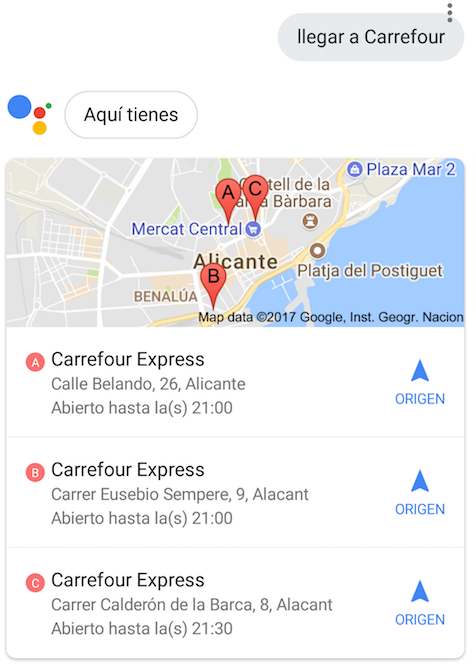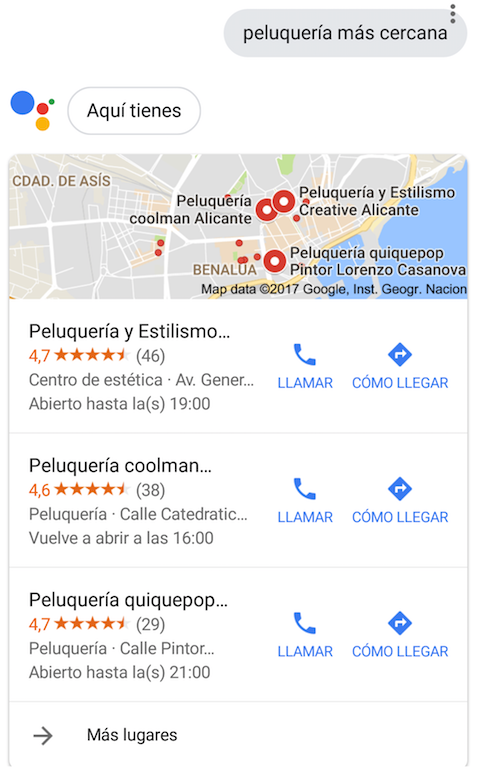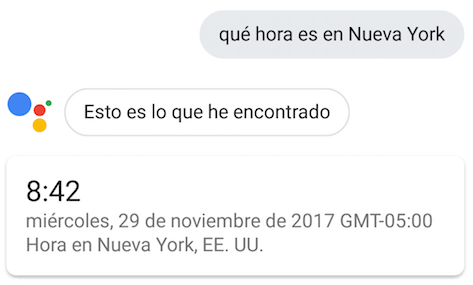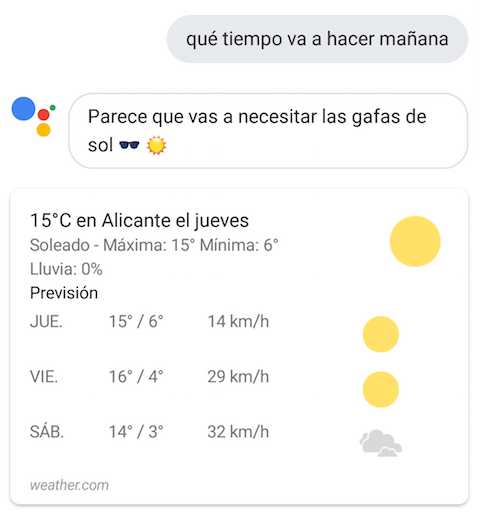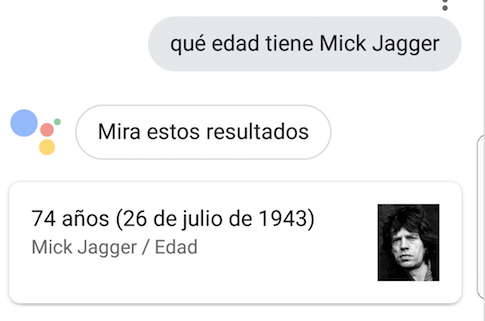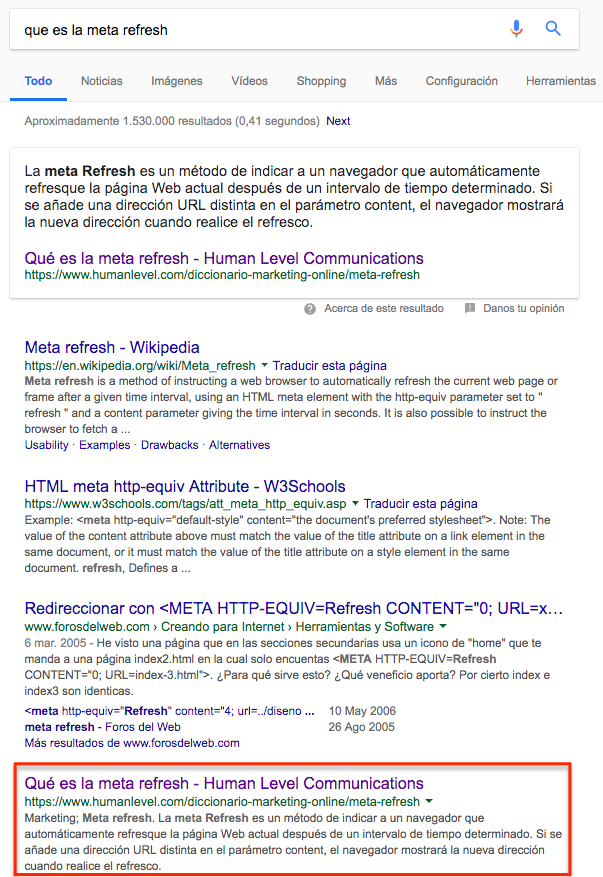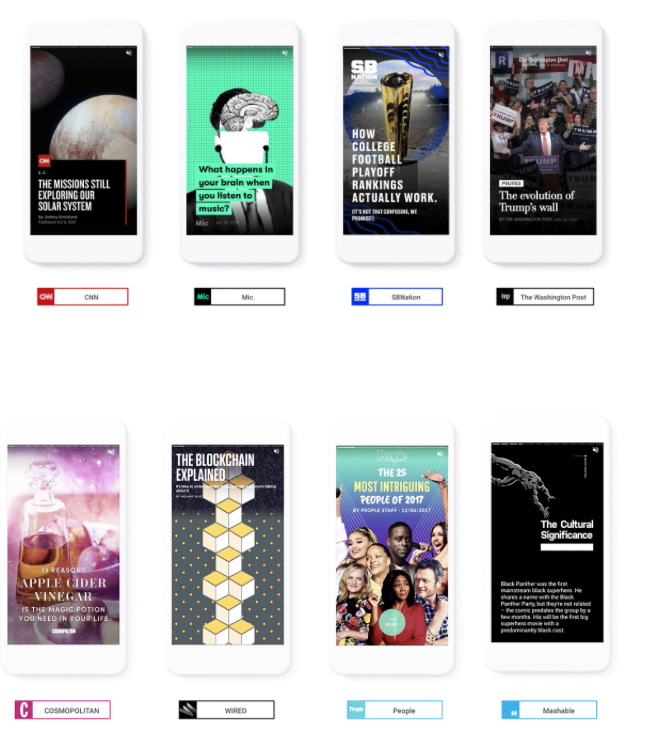Written by Merche Martínez
Index
The year 2018 has just started and our minds are already on SEO news or trends. The world of digital marketing is advancing by leaps and bounds, what does this year have in store for us?
Voice search
Voice search is a resource that is increasingly being used. Requesting information from our mobile device without having to type makes it more convenient and useful. This trend must be taken into account for SEO, because we do not express ourselves the same way in writing as we do when speaking. In voice searches, users use a more natural and fluid language than when typing, which favors long tail searches. Now more than ever we must put ourselves in the user’s shoes to know how he/she will perform the search by talking to the phone as if he/she were another person.
But let’s take a look at the growth of voice searches with some data:
- 35x voice searches on Google in 2016.
- 25% of 16-24s use voice search on mobile.
- 40% of adults use voice searches per day.
- 50% of searches in 2020 will be by voice.
- 60% of users started using voice search in the last year.
Ok Google” voice actions
Due to the increase in usage we have seen, more and more actions we can perform in mobile Google searches using only our voice.
- Location indications: thanks to the geolocation of our device, Google gives us the opportunity to obtain indications on how to get to a site or offers us information on nearby sites. Some examples would be the following searches: “To get to Carrefour” or “Nearest hairdresser”.
- Find out the time: What time is it in New York?
- Weather information: What will the weather be like tomorrow?
- Trivial questions: How old is Mick Jagger?
- Consult price quotations on the stock exchange.
- Calculator.
- Dictionary/definition.
- Convert units.
- Tracking of a package from the Gmail order confirmation.
These are some of the “Ok Google” voice actions, but I invite you to see them all at this link.
Mobile First Index (Mobile First Index)
It is a fact that the use of mobile devices has increased exponentially in recent years. Google is very aware of the user experience and everything points to the fact that this year it will unify the ranking of search results taking into account only the mobile version.
Until this happens, both versions are available. For this reason, do not be surprised if in desktop searches you see a list and in mobile searches the results are different.
All the information about how this change in Google’s index for mobile version affects SEO can be found in this article.
Featured Snippets on Google (Featured Snippets)
Featured snippets or also known as position 0 are direct results that Google offers after a specific search. If we perform the voice search we can listen to the direct answer without the need to select any search result.
We see an example for the search “what is meta refresh”.
In searches performed on Google from a desktop computer, the result of a content published on our website is positioned in Top 0. While the same result is found in position 4 on the first page of search results.
Now we see the result in a search performed from a mobile device. We obtain a single result
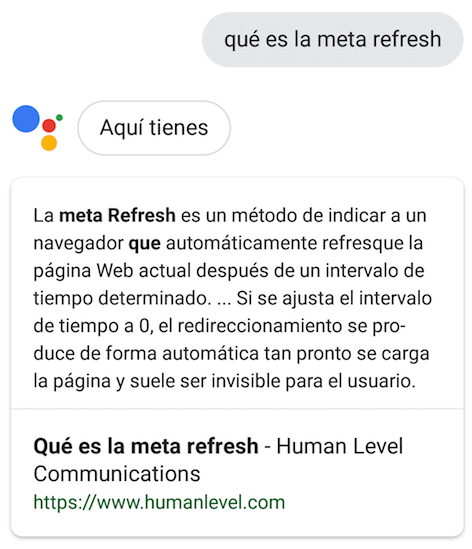
I invite you to read this article from Human Level Press where you will find more detailed information about featured snippets .
HTTPS security
Over the past year we have encountered messages in the Google Search Console tool warning that the use of the non-secure HTTP protocol could display messages to the user indicating that the website is not secure.
In the same message we are told that:
This warning is part of a long-term plan to mark all sites using the http protocol as unsafe.
The solution is to migrate the site to the secure https protocol. A change of protocol involves a URL migration that must be implemented in a correct and controlled manner in order to minimize the impact on site visibility.
HTTP/2
After more than 15 years with the HTTP version, the new version of the HTTP/2 protocol appeared. Among the benefits for seo that this update brings us, we highlight an improvement in loading times of around 30%.
Google has actively collaborated in the development of HTTP/2, since it is based on its SPDY protocol, so it would not be unusual for it to start ranking websites better by using it.
AMP
AMP was born in 2015 with the goal of improving users’ mobile browsing experience. For a specific search Google offers a carousel of results implemented as Accelerated Mobile Pages (AMP), where content relevant to the user’s search is displayed.
Google announced in late 2017 that to improve user experience with AMP, AMP page content must be comparable to canonical page content. This initiative is motivated by the fact that AMP pages have been detected that offer minimal content or content that differs from that of the canonical page. These practices generate a negative user experience that goes against the nature of AMP, which is based on offering the user a fast and fluid experience.
According to the news published on Google’s blog, these changes will be effective as of February 1, 2018.
We expand on Accelerated Mobile Pages (AMP) in this article.
Well yes, these are the seo trends for 2018 that we wanted to highlight. But surely we have a lot to see and as always we will be attentive to any news that comes from Google.
[dt_highlight color=”” text_color=”” bg_color=””]Update February 21, 2018[/dt_highlight]
AMP Stories
Promises are promises. I take this opportunity to echo the publication made by Google about the new AMP Stories. The Mountain View-based company is jumping on the bandwagon of the stories that are so successful on Snapchat, Instagram Stories and Facebook.
Using the concept we know of stories, in this case it is focused on offering news in AMP format but moving from plain text to visual and enriched content. As we know, the goal is always to improve the user experience. With these stories we go from reading a news story by scrolling continuously on our mobile device to consuming the information only by touching the screen to turn the page or watch an animation, videos, etc.
As an idea it’s great, but don’t forget that the goal of AMP pages is to provide the user with a fast and satisfying mobile experience. For this reason, the AMP Stories proposal has different pre-established but flexible design templates, so that editors can customize their content.
Media outlets such as CNN, Conde Nast, Hearst, Mashable, Meredith, Mic, Vox Media, and The Washington Post already incorporate these AMP stories.
To see the examples and all the information I invite you to visit this page.
